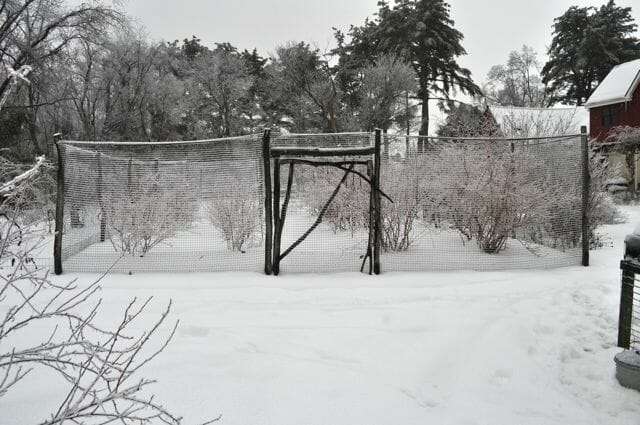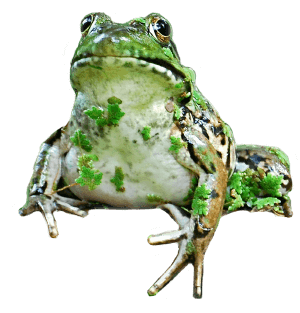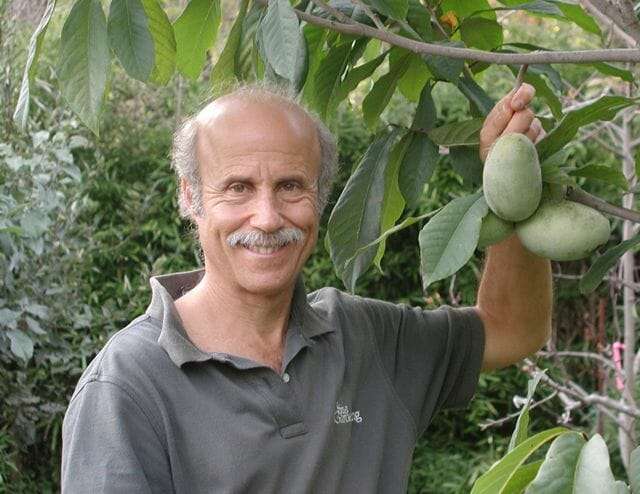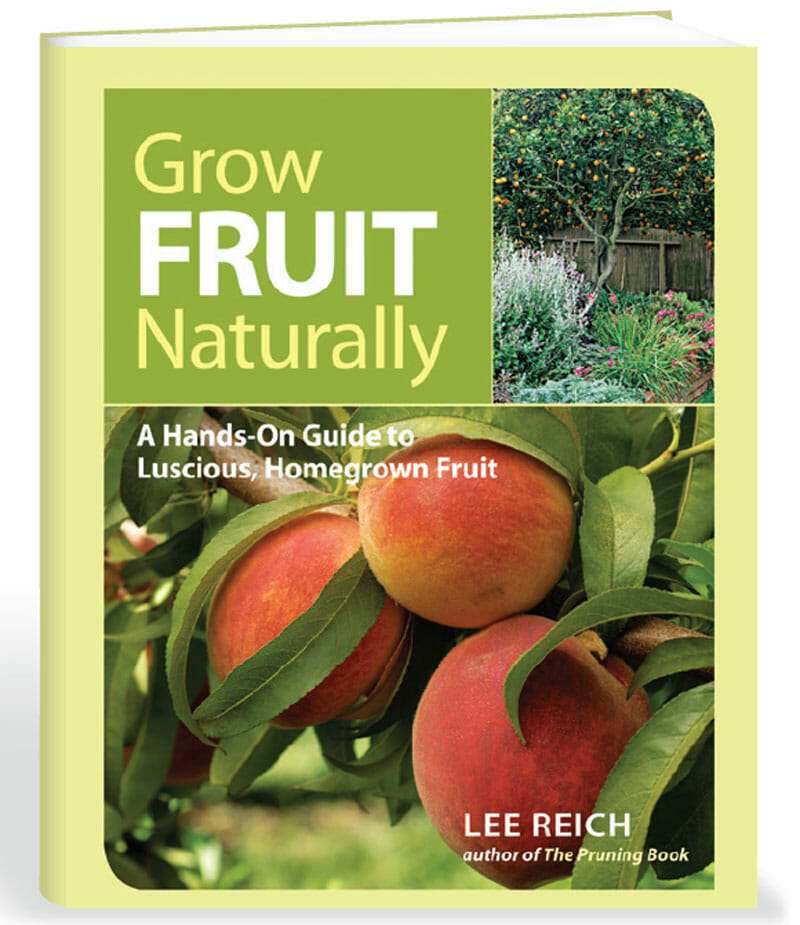10 tips for growing blueberries in the backyard
 WANT TO SUCCEED with blueberries? Ask the guy with a Ph.D. in the subject, author of all the best books on home-garden fruit growing: Lee Reich, a repeat guest on my public-radio show, and an old friend. That’s Lee’s blueberry netted “gazebo” up top, meant to keep the crop safe from birds and other hungry types. All the delicious details on how to grow blueberries:
WANT TO SUCCEED with blueberries? Ask the guy with a Ph.D. in the subject, author of all the best books on home-garden fruit growing: Lee Reich, a repeat guest on my public-radio show, and an old friend. That’s Lee’s blueberry netted “gazebo” up top, meant to keep the crop safe from birds and other hungry types. All the delicious details on how to grow blueberries:
10 tips for growing blueberries
ALL OF LEE REICH’S instructions except for pruning refer to care of all blueberry plants, whether lowbush or high; pruning details below are for highbush types. (That’s him with ripening paw paws, above.)
- Choose a sunny spot. Though blueberries grow in semi-shade in nature, heavier fruiting happens with more sunshine.
- Test for pH, and adjust to a very acidic 4-to-5 range using pelleted sulfur (a natural element, and easier and safer to use than dusty powders).
- Though blueberries like infertile soil (yes!), it must be high in organic matter.
- Add peat moss to the hole when planting. Lee doesn’t usually use much peat moss, which is a non-renewable resource, except for this one-time application.
- Water well, and provide regular water for maximum fruiting (especially critical the first two years in the ground). Lee’s plants are on a drip system.
- Mulch to a depth of about 3 inches with wood shavings and chips, pine needles, shredded autumn leaves or sawdust.
- Net the plants during fruiting season to outsmart the birds. (Lee grows his 16 highbush shrubs in a netted “gazebo,” seen in the top photo, and they yield an astounding 190 quarts of fruit.)
- Replenish the mulch each fall, after leaf drop—and also feed the plants just a little Nitrogen at that time by spreading soybean meal (from the feed store) at the rate of 1 pound per 100 square feet.
- Recheck the pH and readjust every couple of years with more pelleted sulfur.
- Don’t prune till highbush plants are four or five years in the ground. Stems aged six years or older–about inch-thick stems–don’t produce optimally. In late winter, the oldest stems are cut out to the base (photo below shows how the base of a mature plant looks after pruning, with a good mix of older, younger, and middle-aged stems remaining).
- Need more detail? Lee’s complete blueberry how-to is in our podcast (play it at the bottom of the page), and in this story from my archives, along with other tips and resources. Or visit Lee’s website.
prefer the podcast version of the show?

or Stitcher (and browse my archive of podcasts here).
how to win ‘grow fruit naturally’
TO ENTER TO WIN one of two copies of Lee Reich’s latest book “Grow Fruit Naturally”, which Lee was generous enough to share with me to offer to you, comment below by answering the question. UPDATE: The giveaway is now closed, but comments are always welcome.
What fruit, if any, have you had success with in the garden? Which one(s) have outsmarted you thus far?
Don’t worry, you can simply say, “Count me in” and your entry will be official, in case you’re feeling shy–but I love hearing your answers. Two winners will be drawn at random after entries close at midnight Sunday, March 31, 2013. Good luck to all!
(Garden photos and portrait courtesy of Lee Reich. Disclosure: Books purchased from my Amazon affiliate link yield a small commission.)







This is my first year growing fruit trees. I planted, today actually, blackberries, raspberries, and grapes. I’m excited but nervous.
We live in Bucks County ,Penna. would really love to grow blueberries! Cou me in!
Happy Spring!
Count me in. I haven’t tried any fruit yet, but would like to try strawberries and blueberries and raspberries.
Strawberries spread out so you can re pot and as they spread :)
My fig tree grew well for years — until root fungus toppled the whole tree.
Oh, dear — I see my comment says 12:13 am on April 1. It’s still 11:13pm March 31 here near New Orleans.
Count me in
Oh count me in, I just put in blueberry bushes last year.
Ahh…I see I, too, am late for the entry – but here on the Olympic Peninsula, Washington State, blueberries are a natural, as are most berries. In the “somewhat unusual” department, Goji berries are doing quite well. Also good here are “native” types: Saskatoons, huckleberries, currants, elders, etc. – as well as strawberries & raspberries. Fruit trees are a different story. We get lots of apples, but cherries & plums depend on what the weather is like when they are in bloom (sometimes it’s too stormy for the bees). I’ve been trying Persimmons & Paw Paws, but they remain a bit elusive for me.
We live in Northern Ohio and have blueberries in our backyard. They have not yielded many blueberries the past couple of years. We could use the book.
Frozen blueberry smoothies with bananas, organic juice, yogurt ~ our breakfast at least 3x a week. I would love to grow fresh blueberries in season in PA! Our neighbor does, so why can’t we? We tried fig trees, but failed. We don’t have alot of property, but could do bb bushes. ; )
Funny, Jane — I just had a frozen blueberry and banana smoothie for breakfast y’day! Delicious. Plan to freeze more, more, more this year. :)
Our blueberries at the lake are by far the best fruiting crop…100% credit to Mother Nature! Come to think of it, all the fruit successes -grapes and raspberries too- have been existing patches they have taken care of themselves. Anything I have tried to do purposefully in the fruit department has been lame! Oh my! Timer to tune in..apparently I need this book!
AND THE WINNERS WERE: Tonia and Laura (who I notified by email after the contest ended and shipped their books to, but promptly forgot to post here).
Thanks to all for great answers.
I had success growing tomatoes, which is the only fruit or food I have ever grown. I now want to learn how to grow everything I love to eat, like blueberries. Thank you so much for your help.
I only have quince in my NC garden. It fruits every year. My son and I plan to grow fruit plants, starting from blueberry and apple this year. So we really could use some advices. Please count us in!
Count me in. We are beginning to get a good crop from our blueberries bushes. I just wish our pear trees were doing as well
I will be planting my first blueberries tomorrow so count me in!!
I planted 6 blueberries 2 yrs ago when the acid reading was about 6.0; I added sulfur but no berries so far. Today is Oct 7 in Michigan. Could I add soybean mix now? Can I add sulfur now? Also how can I raise the beds? I don’t want to dig them up and add dirt and replant them this fall . . . . but I will if you say so.
Hi there, great advice for blueberry planting. The fruits I have had success in growing are tomatoes and raspberries. I had rotten heirloom tomatoes from my garden last year. I just threw some in my raised bed garden and they sprouted! I also had some growing in my compost. I don’t know if the I out smarted the tomatoe or if it out smarted me. Anyways COUNT ME IN :)
I PLANTED BLUEBERRIES AND CURRANTS THIS YEAR. I HAVE A HEARD TIME PLANTING BLUEBERRIES IN MY GARDEN BECAUSE OF THE CLAY AND ROCKY SOIL. REALLY COULD USE SOME GOOD TIPS. COUNT ME IN.
Can blueberry plants grow in Barstow CA in planters?
Hi, Shirley. You can, provided that you purchase varieties that are suited to your “low-chill” zone — not the same ones I’d grow here in Zone 5, where I have lots of winter dormant time. The pots will have to be really big, and if you can locate more dwarf varieties that will be ideal. I see that the newish Brazelberries breeding program of containr-size fruit plants now has a low-chill (hardy as warm as Zone 10) blueberry. It’s here. Some places to start reading: UC Davis (a pdf) and California Garden Web. Four Winds Growers mail-order nursery might also have some good advice.
do you need more then one plant to do well ?
Highbush blueberries are what’s termed partially self-fertile (or self-pollinating), so having more than one variety of plant (that bloom at the same time) will improve your yield of fruit–and may also yield larger berries. Different varieties are more or less able to pollinate themselves, so read the variety description to see what’s recommended for the one you are considering.
By different variety do you mean a high bush and a low bush? Or two types of the high or low?
Different highbush blueberry varieties are more inclined or less inclined to be self-fruitful — some are fine on their own, and others benefit from a richer source of pollen than just their own. So it pays to do a little homework and find out whether the one you are considering is one that will benefit from the presence of what’s called cross-compatible pollen (pollen from a closely related variety — such as another one in the same series). Read about that here in more depth … or ask at your nursery.
AreBerkeley and Bluecrop high bush or lowbush
Both are highbush.